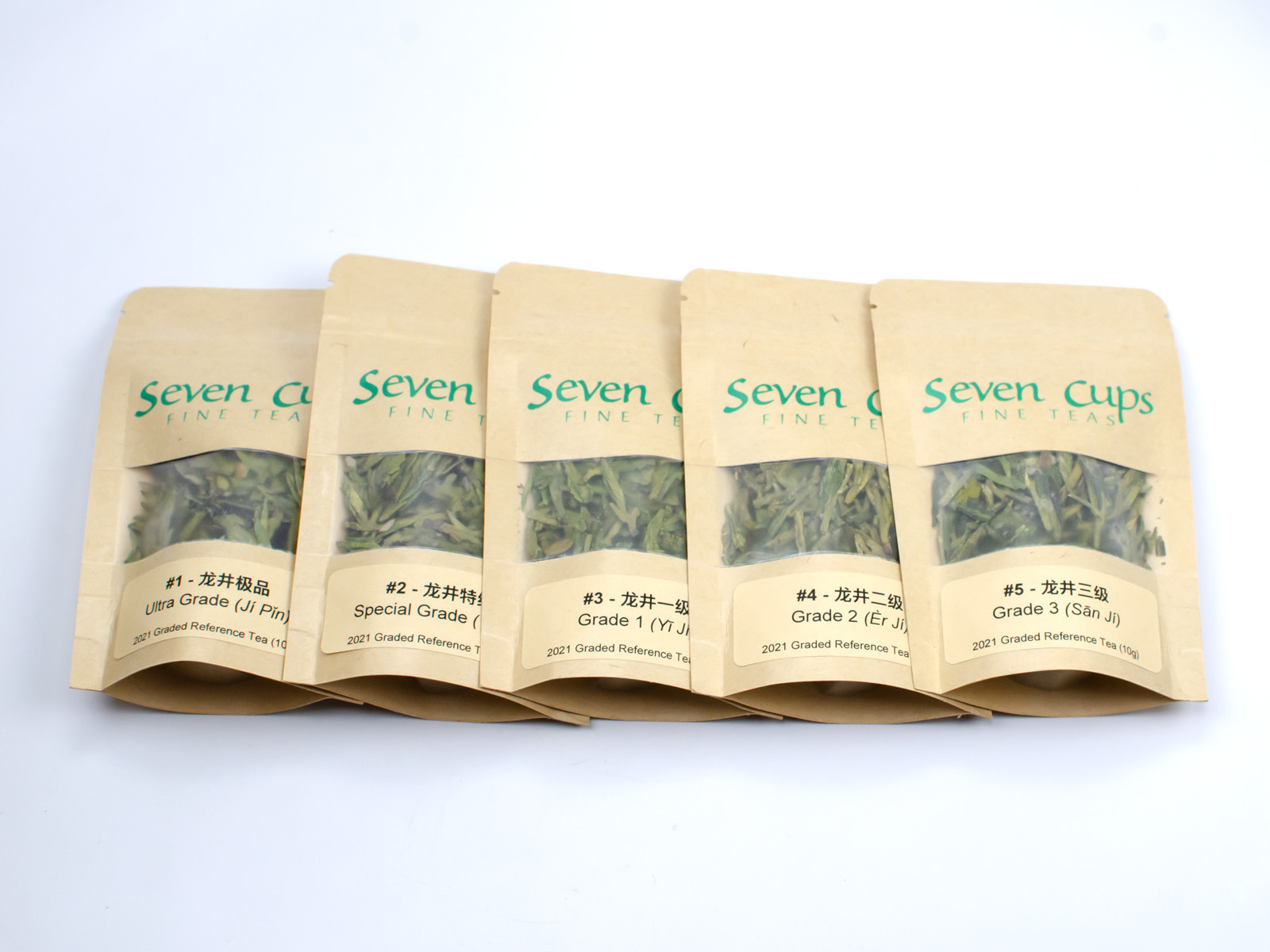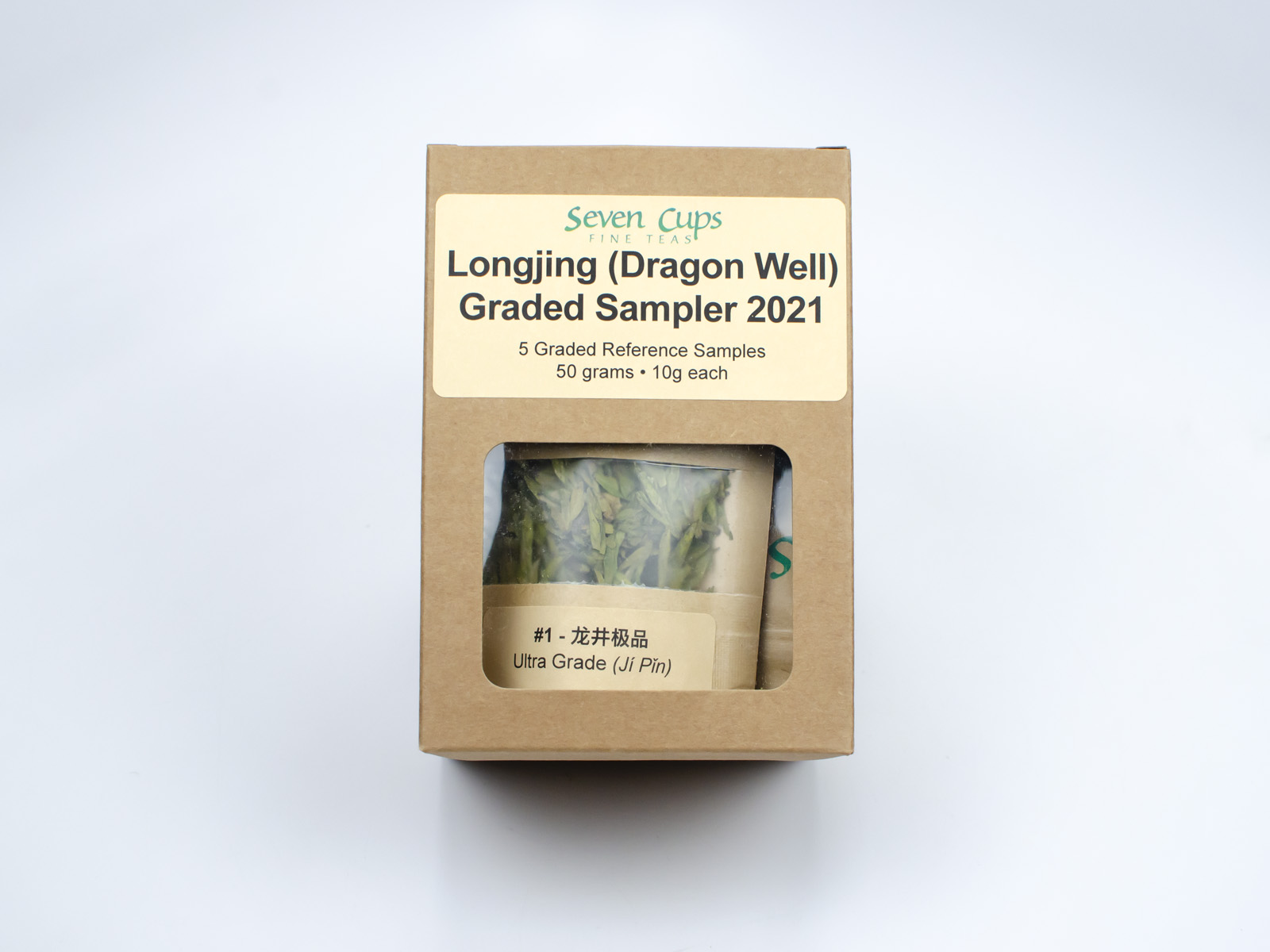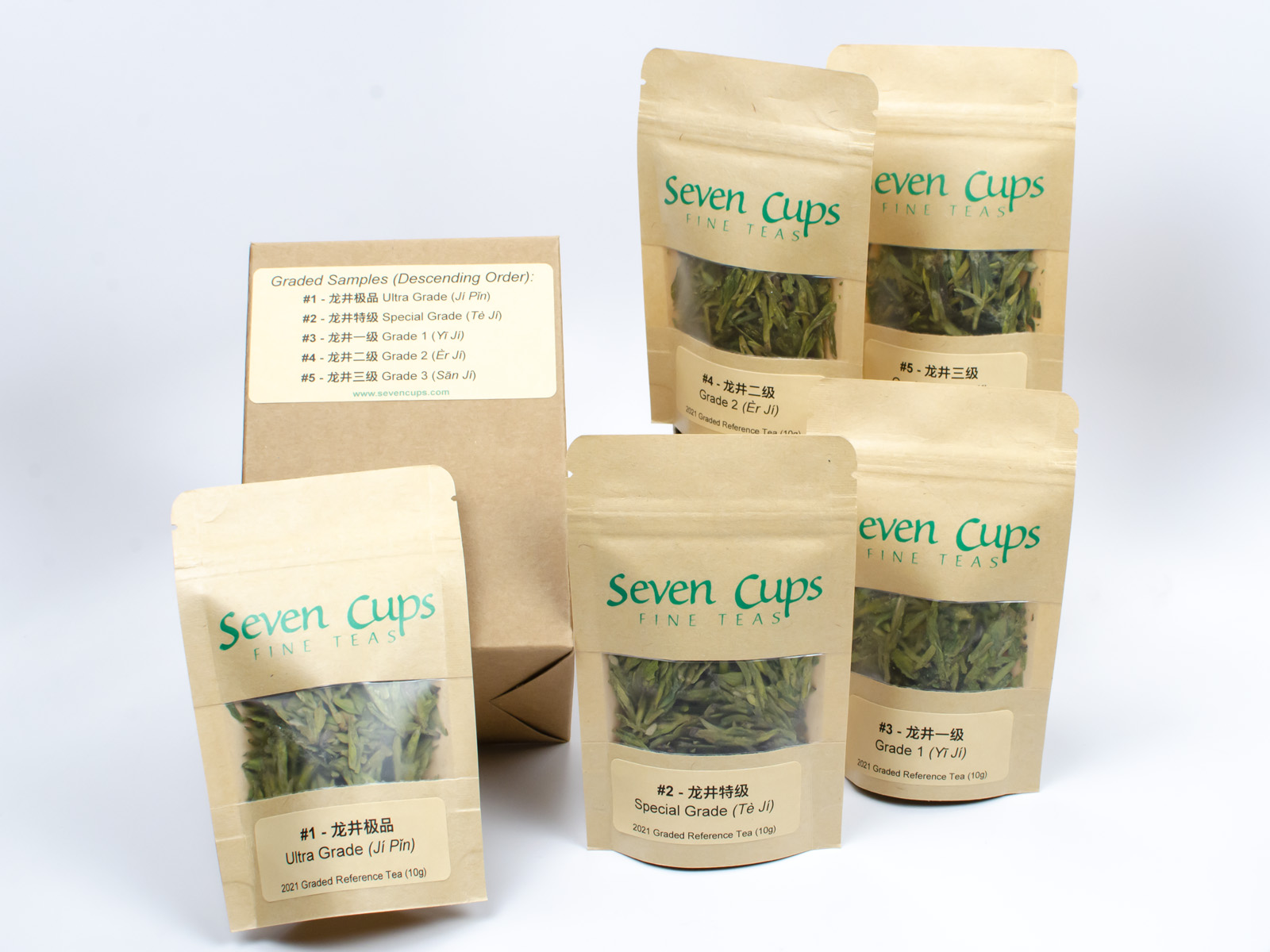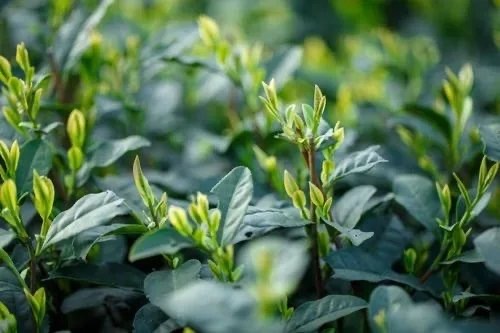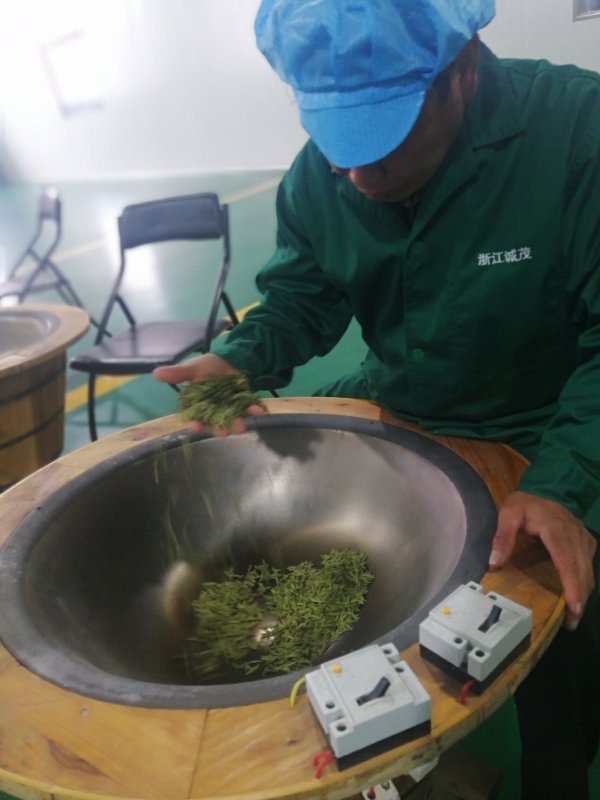Longjing (Dragon Well) Graded Sampler
Sharpen your tea tasting skills like a professional with these five different grades of China’s most famous green tea, Longjing (Dragon Well).
$50.00
Out of stock
Would you like a notification when this product is back in stock?
Interested in honing your tea tasting skills?
Calibrate your taste buds on these five different grades of China’s most famous green tea, Longjing (Dragon Well). These five teas were grown in the same garden, harvested the same season and processed by the same tea maker, but are divided into five different quality grades. These teas come from the garden and maker of one of our all-time house and customer favorites, Da Fo Longjing (Big Buddha Dragon Well) green tea. You will find this classic green tea among the lineup for comparison.
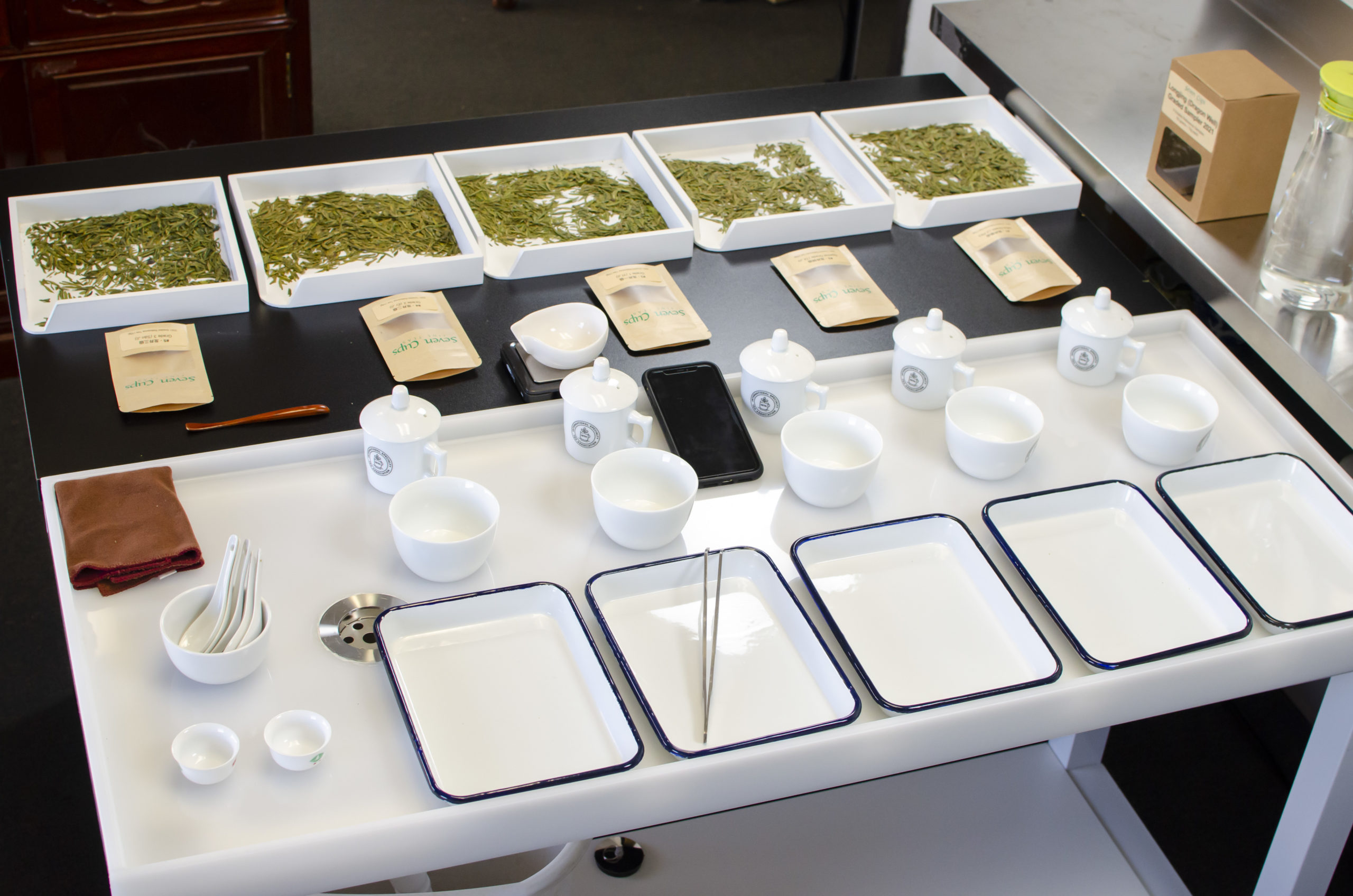
A selection of five different grades of the same tea beautifully illustrates how differences in plucking and processing affect its final quality. You will receive 10 grams of each different tea, enough for two to three servings, each of which can be infused multiple times.
This judging sampler kit is a great way to refine your tea-tasting palate. It’s also an excellent way to begin exploring what really makes a tea good, or to just enjoy the unique flavors and aromas of one of China’s iconic teas.
Teas included:
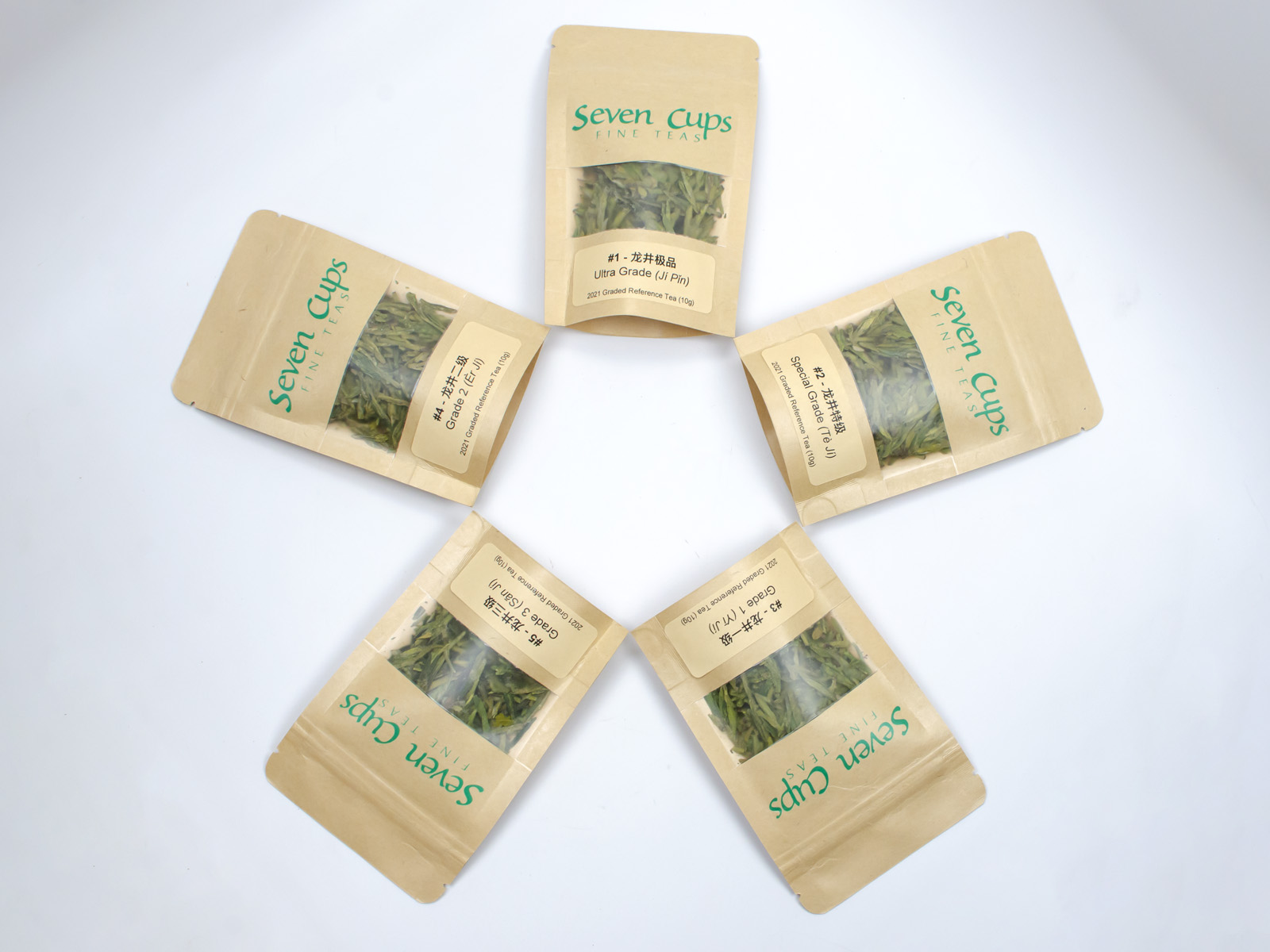
In order of highest to lowest grade:
- Ji Pin (Ultra Grade) Da Fo Longjing 2022 (Highest available grade)
- Te Ji (Special Grade) Da Fo Longjing 2022 (Our usual Da Fo Longjing)
- Yi Ji (Grade 1) Da Fo Longjing 2022
- Er Ji (Grade 2) Da Fo Longjing 2022
- San Ji (Grade 3) Da Fo Longjing 2022
How To Use This Sampler:
Brew & Study
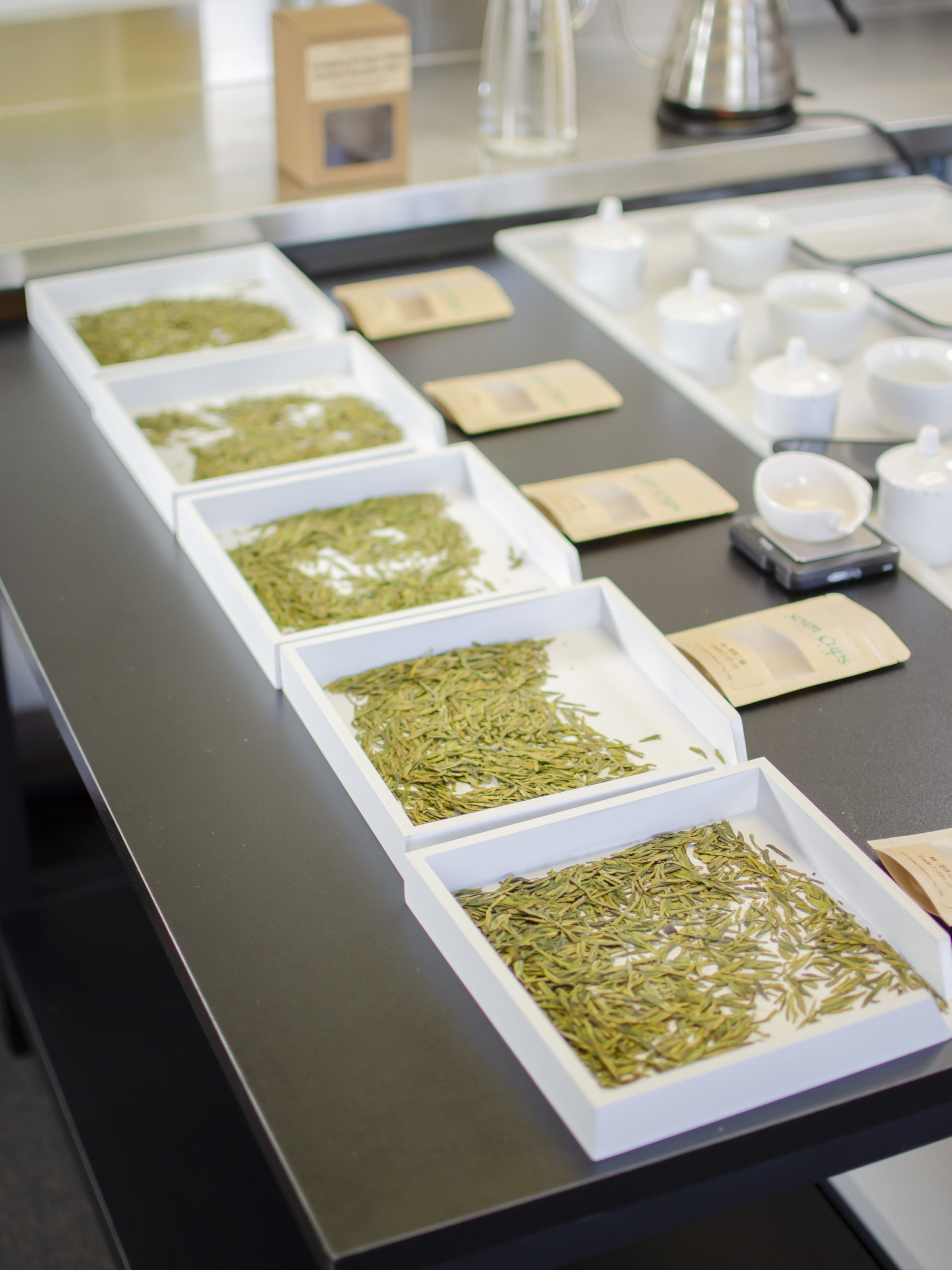
You can either make each tea separately for casual drinking or brew different teas side by side for comparison. Here are some guidelines for comparative tasting below. You can adjust them to your own preferences, but it’s important to be consistent. The key is to keep the brew times and temperatures the same for each tea when comparing them.
As a general rule, higher grades of green tea are both more delicate and more complex, with richer floral aromatics. Lower grades tend to have a stronger flavor that can be more astringent.
Pay attention to how the aromas and flavors change between infusions. Are some characteristics more prominent in the first infusion? Do some only show up in later infusions? Are others more persistent throughout infusions?
Brewing recommendations for judging tea:
- Empty the sample onto a solid white or black surface. A sheet of paper works well.
- Examine the shape and color of the dry leaves. Smell their aroma.
- Preheat a small gaiwan, tea pot, or standard judging cup (about 150mL/5oz) with hot water. Pour water out.
- Place 3g of dry tea leaves in your now empty warmed gaiwan, tea pot, or tea judging cup. Close for a few seconds.
- Smell the new aromas released from the leaves when they are exposed to the moisture in the preheated vessel.
- Fill your gaiwan or tea pot with hot water that is just below boiling, about 85°C (185°F).
- Infuse for 4 minutes.
- Pour tea out into another pitcher or bowl. Smell the infused leaves, noting their aroma. Taste the tea, noting the aroma and flavor.
- Make another infusion with the same leaves, 4 minutes. Taste this infusion and compare it to the first.
- Brew further, longer infusions if desired.
- Empty your fully-infused leaves onto a solid color surface. Note how the infused leaves have opened, their color, their maturity and plucking standard.
Test Yourself
Once you feel familiar with the difference between each tea, try blinding the samples and test yourself to see if you can correctly arrange the teas by grade.
Reference
Tea makers and merchants keep reference samples to measure against future batches. You can keep some leaf from this graded sampler as a reference point for comparison with other tea.

